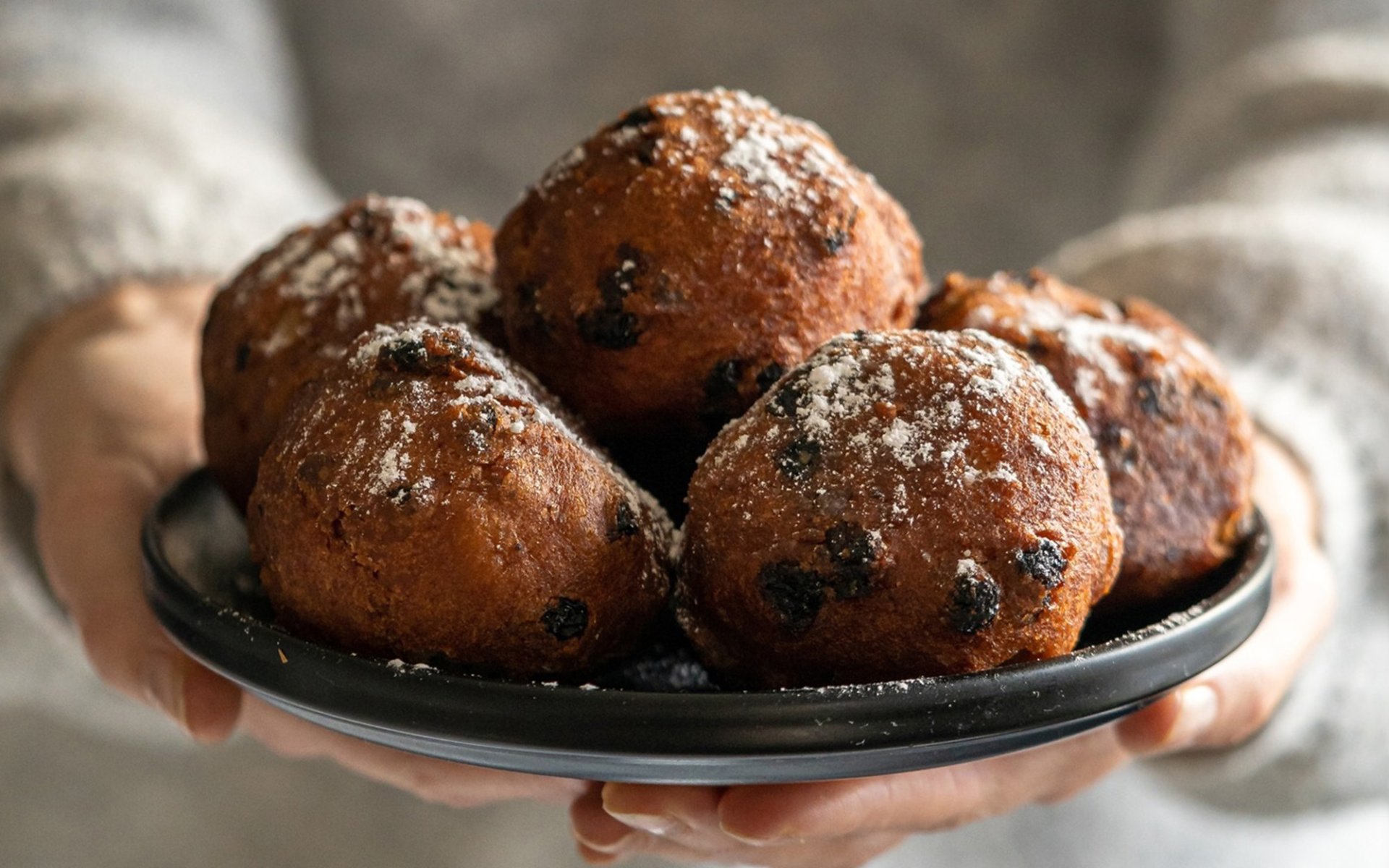Oliebollen

Oliebollen (OH-lee-bol-len), also known as Dutch Doughnuts, are a traditional Dutch food popularly consumed during the winter months, especially around the New Year's festivities between December 26th and January 6th. These treats bring warmth and joy to the celebratory season. Today, Rimping Supermarket invites you to delve into the story of this Dutch doughnut-style pastry.
Origins and Beliefs
The origin of Oliebollen dates back hundreds of years, believed to have been invented by indigenous tribes in the Netherlands. It was thought that consuming fried foods during the New Year's festival would help ward off evil spirits and bring good luck for the new year. Evidence of this tradition appears in a painting by the Dutch artist Aelbert Cuyp from 1652, currently displayed at the Dordrechts Museum, illustrating the long-standing connection of this pastry with Dutch culture.
Originally, Oliebollen were simple balls of dough made from flour, eggs, and yeast, fried until crispy on the outside and soft on the inside. However, over time, new ingredients were added, such as apples or raisins, leading to a greater variety of flavors and textures. The oldest known recipe was found in the Dutch book De verstandige kock in 1667 (meaning The smart/responsible cook).
Unique Characteristics and Celebrations
The unique characteristic of Oliebollen is that donut-like dough is shaped into round balls and deep-fried in hot oil. Once cooked, they are drained and dusted with powdered sugar, best enjoyed warm, especially during the New Year's Eve and New Year's Day celebrations.
Leading up to the festive season, Oliebollen are sold at street stalls called Oliebollenkraam (oh-lee-bol-len-kram) throughout the Netherlands, typically selling for about one euro per piece. This is a familiar sight and an integral part of the festive atmosphere.
However, in addition to their popularity during New Year's celebrations, Oliebollen are also enjoyed during other festivals, such as winter fairs, Christmas markets, carnivals, and various local Dutch events, demonstrating the significance of this pastry in Dutch daily life.
Global Spread and Evolution
Over the centuries, Oliebollen began to spread to various regions worldwide, leading to diverse recipes and variations in different countries. These often include additional ingredients like candied orange peel or spices such as cinnamon or nutmeg, reflecting adaptation to local ingredients and tastes:
- In France, they are called Croustillons.
- In Belgium, they are known as Smoutebollen.
- In Germany, they are called Berliner, a version that typically includes a jam filling.
- In Italy, they are known as Fritole.
Oliebollen are therefore more than just ordinary doughnuts; they are a cherished tradition passed down through generations and continue to be loved by people worldwide. At Rimping Supermarket, we offer a wide array of high-quality ingredients, including flour, yeast, sugar, and various dried fruits, ready for you to try creating your own Oliebollen and experience the taste of Dutch celebration!


